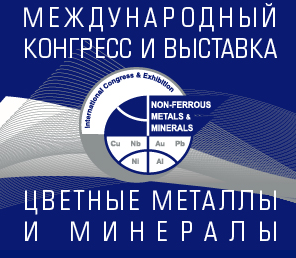ДЕСТРУКЦИЯ ВОДНЫХ РАСТВОРОВ 2,4-ДИХЛОРФЕНОЛА В ПЛАЗМЕННО-КАТАЛИТИЧЕСКОМ РЕАКТОРЕ БАРЬЕРНОГО РАЗРЯДА
Аннотация
В работе были исследованы процессы деструкции водных растворов 2,4-дихлорфенола в диэлектрическом барьерном разряде атмосферного давления в среде кислорода, с находящимся внутри реактора катализатором Pt/Al2O3. Экспериментально показано, что 2,4-дихлорфенол разрушается в плазме достаточно эффективно (степень деструкции достигает не менее 70 %). В работе были оценены кинетические параметры и определены основные промежуточные и конечные продукты процесса разложения 2,4-дихлорфенола под действием активных частиц плазмы в присутствии катализатора. Деструкция исходного соединения описывается кинетическим уравнением первого порядка по концентрации 2,4-дихлорфенола. Эффективная константа скорости слабо зависит от условий эксперимента и составляет 0,43 с-1. Состав продуктов деструкции был изучен методом газовой хроматографии, а также флуоресцентным, спектрофотометрическим и потенциометрическим методами. В качестве конечных продуктов деструкции выявлены Cl- в жидкой фазе, а также СО2 в газовой фазе, а промежуточными продуктами деструкции являются карбоновые кислоты и альдегиды, но их концентрации невелики относительно диоксида углерода. Молекулярный хлор в газовой фазе не обнаружен. Установлено, что озон не вносит существенного вклада в процесс окислительной деструкции 2,4-дихлорфенола, т.е. в процессе окисления основную роль играют другие активные частицы плазмы, например, гидроксильные радикалы и атомарный кислород.
. . . . . . . . . . . . . . . . . . . . . . . . . . . . . . . . . . . . . . . . . . . . . . . . . . . . . . . . . . . . . . . . . . . . . . . . . . . . . . . . . . . . . .
Литература
Hoseini S.N., Pirzaman A.K., Aroon M.A., Pirbazari A.E. Photocatalytic degradation of 2, 4-dichlorophenol by Co-doped TiO2 (Co/TiO2) nanoparticles and Co/TiO2 containing mixed matrix membranes. J. Water Process Eng. 2017. V. 17. P. 124-134. DOI: 10.1016/j.jwpe.2017.02.015.
Bilgin Simsek E., Aytas B., Duranoglu D., Beker U., Trochimczuk A.W. A comparative study of 2-chlorophenol, 2, 4-dichlorophenol, and 2, 4, 6-trichlorophenol adsorption onto polymeric, commercial, and carbonaceous adsorbents. Desalin. Water Treat. 2016. V. 57. N 21. P. 9940-9956. DOI: 10.1080/19443994.2015.1033478.
Leong S., Razmjou A., Wang K., Hapgood K., Zhang X., Wang H. TiO2 based photocatalytic membranes: A review. J. Membr. Sci. 2014. V. 472. P. 167-184. DOI: 10.1016/j.memsci. 2014.08.016.
Jiang G., Lan M., Zhang Z., Lv X., Lou Z., Xu X., Dong F., Zhang S. Identification of active hydrogen species on palladium nanoparticles for an enhanced electro-catalytic hydrodechlorination of 2, 4-dichlorophenol in water. Environ. Sci. Technol. 2017. V. 51. N 13. P. 7599-7605. DOI: 10.1021/acs.est. 7b01128.
Hallaj T., Amjadi M. Determination of 2, 4-dichlorophenol in water samples using a chemiluminescence system consisting of graphene quantum dots, rho-damine B and cerium (IV) ion. Microchim. Acta. 2016. V. 183. N 3. P. 1219-1225. DOI: 10.1007/s00604-016-1749-z.
Xiao B., Cui L.-Q., Ding C., Wang H. Effects of lithium and 2, 4-dichlorophenol on zebrafish: circadian rhythm disorder and molecular effects. Zebrafish. 2017. V. 14. N 3. P. 209-215. DOI: 10.1089/zeb.2016.1389.
Wang Y., Zhang J.-X., Ren H.-J., Wang Y., Pan H.-Y., Zhang L.-Y. Phytoremediation potentiality of garlic roots for 2, 4-dichlorophenol removal from aqueous solutions. Appl. Microbiol. Biotechnol. 2015. V. 99. N 8. P. 3629-3637. DOI: 10.1007/s00253-014-6277-3.
Ormad M., Ovelleiro J., Kiwi J. Photocatalytic degradation of concentrated solutions of 2, 4-dichlorophenol us-ing low energy light: identification of intermediates. Appl. Catal. B: Environmental. 2001. V. 32. N 3. P. 157-166. DOI: 10.1016/S0926- 3373(01)00132-1.
Gu L., Chen Z., Sun C., Wei B., Yu X. Photocatalytic degradation of 2, 4-dichlorophenol using granular activat-ed carbon supported TiO2. Desalination. 2010. V. 263. N 1-3. P. 107-112. DOI: 10.1016/j.desal.2010.06.045.
Angelini V.A., Agostini E., Medina M.I., González P.S. Use of hairy roots extracts for 2, 4-DCP removal and tox-icity evaluation by Lactuca sativa test. Environ. Sci. Pol-lut. Res. 2014. V. 21. N 4. P. 2531-2539. DOI: 10.1007/s11356-013- 2172-1.
Buchanan I.D., Nicell J.A. Model development for horseradish peroxidase catalyzed removal of aqueous phenol. Biotechnol. Bioeng. 1997. V. 54. N 3. P. 251-261. DOI: 10.1002/(SICI)1097- 0290(19970505)54:33.0.CO;2-E.
Eapen S., Singh S., D'souza S. Advances in development of transgenic plants for remediation of xenobiotic pollutants. Biotechnol. Adv. 2007. V. 25. N 5. P. 442-451. DOI: 10.1016/ j.biotechadv.2007.05.001.
Busca G., Berardinelli S., Resini C., Arrighi L. Technologies for the removal of phenol from fluid streams: a short review of recent developments. J. Hazard. Mater. 2008. V. 160. N 2-3. P. 265-288. DOI: 10.1016/j.jhazmat.2008.03.045.
Li S., Ma X., Liu L., Cao X. Degradation of 2, 4-dichlorophenol in wastewater by low temperature plasma coupled with TiO2 photocatalysis. RSC Adv. 2015. V. 5. N 3. P. 1902-1909. DOI: 10.1039/C4RA10797G.
Lee H.-C., In J.-H., Kim J.-H., Hwang K.-Y., Lee C.-H. Kinetic analysis for decomposition of 2, 4-dichlorophenol by supercritical water oxidation. Korean J. Chem. Eng. 2005. V. 22. N 6. P. 882-888. DOI: 10.1007/BF02705669.
Gushchin A.A., Grinevich V.I., Shulyk V.Y., Kvitkova E.Y., Rybkin V.V. Destruction kinetics of 2,4 dichloro-phenol aqueous solutions in an atmospheric pressure die-lectric barrier discharge in oxygen. Plasma Chem. Plasma Process. 2018. V. 38. N 1. P. 123-134. DOI: 10.1007/s11090-017- 9857-z.
Lu N., Li J., Wang X., Wang T., Wu Y. Application of double-dielectric barrier discharge plasma for removal of pentachlorophenol from wastewater coupling with activated carbon adsorption and simultaneous regeneration. Plasma Chem. Plasma Process. 2012. V. 32. N 1. P. 109-121. DOI: 10.1007/s11090-011-9328-x.
Du C.M., Yan J., Cheron B. Degradation of 4-chlorophenol using a gas–liquid gliding arc discharge plasma reactor. Plasma Chem. Plasma Process. 2007. V. 27. N 5. P. 635-646. DOI: 10.1007/s11090-007-9092-0.
Yang H., Tezuka M. Plasma-induced decomposition of dichlorophenols and trichlorophenols in water by means of anodic contact glow discharge electrolysis. Plasma Chem. Plasma Process. 2013. V. 33. N 6. P. 1043-1052. DOI: 10.1007/s11090-013-9481-5.
Butman M.F., Gushchin A.A., Ovchinnikov N.L., Gusev G.I., Zinenko N.V., Karamysheva S.P., Krämer K.W. Synergistic effect of dielectric barrier discharge plasma and TiO2-Pillared Montmorillonite on the degradation of rhodamine B in an aqueous solution. Catalysts. 2020. V 10. N 4. P. 359. DOI: 10.3390/catal10040359.
GOST R 51209-98. Drinking water. Method for determining the content of organochlorine pesticides by gas-liquid chromatography. Ministry of Health of Russia. 1998 (in Russian).
Lurie Yu.Yu. Analytical chemistry of industrial wastewater. M.: Khimiya. 1984. 448 p. (in Russian).
PND F 14.1:2:4.187-02. The method of measuring the mass concentration of formaldehyde in samples of natural, drinking, and wastewater by the fluorimetric method on a Fluorat-02 fluid analyzer. Lumex LLC. 2002. (in Russian).
RD 52.24.361-95 Methodological guidelines. The method of performing measurements of the mass concentration of chlorides in water by a potentiometric method with an ion-selective electrode. (in Russian).
UOP 603-13. Analysis of Trace CO and CO2 in bulk H2 and Light Gaseous Hydrocarbons by GC. AC Analytical Controls. 2013.
Gushchin A.A., Grinevich V.I., Izvekova T.V., Kvitkova E.Y., Tyukanova K.A., Rybkin V.V. The destruction of carbon tetrachloride dissolved in water in a dielectric barrier discharge in oxygen. Plasma Chem. Plasma Pro-cess. 2019. V. 39. N 2. P. 461–473. DOI: 10.1007/s11090-019-09958-9.
Parkinson, W.H., Yoshino K., Freeman D.E. Absolute absorption cross section measurements of ozone and the temperature dependence at four reference wavelengths leading to renormalization of the cross section between 240 and 350 nm. Smithsonian Institution Astrophysical Observatory, MA. 1993. V. 98. P. 5205-5211.
PND F 14.1:2:4.190-2003. The methods of measuring the bichromate oxidizability (chemical oxygen consumption) in natural, drinking and waste water samples by the photometric method using on a Fluorat-02 fluid analyzer. Lumex LLC. 2003 (in Russian).
Gushchin A.A., Grinevich, V.I., Gusev, G.I., Kvitkova, E.Y., Rybkin, V.V. Removal of oil products from water using a combined process of sorption and plasma exposure to DBD. Plasma Chem. Plasma Process. 2018. V. 38. N 5. P. 1021-1033. DOI: 10.1007/s11090-018-9912-4.
Bobkova E.S., Isakina A.A., Grinevich V.I., Rybkin V.V. Decomposition of aqueous solution of acetic acid under the action of atmospheric-pressure dielectric barrier discharge in oxygen. Russ. J. Appl. Chem. 2012. V. 85. N 1. P. 71-75. DOI: 10.1134/S1070427212010144.
Bobkova E.S., Grinevich V.I., Kvitkova E.Yu., Rybkin V.V. Destruction of formaldehyde and acetone dissolved in water in atmospheric pressure barrier discharge in oxygen. ChemChemTech. [Izv. Vyssh. Uchebn. Zaved. Khim. Khim. Tekhnol.]. 2011. V. 54. N 8. P. 55-58.
Bobkova E.S., Grinevich V.I., Ivantsova N.A., Isakina A.N., Kvitkova E.Yu., Rybkin V.V. Comparative study of the kinetics of the decomposition of phenol and some surfactants in aqueous solutions in an atmospheric pres-sure dielectric barrier discharge in oxygen. ChemChemTech [Izv. Vyssh. Uchebn. Zaved. Khim. Khim. Tekhnol.]. 2011. V. 54. N 4. P. 110-114.
Gusev G.I., Gushchin A.A., Grinevich V.I., Osti A.A., Izvekova T.V., Kvitkova E.Yu. Regeneration of natural sorbents contaminated with oil products in dielectric barrier discharge plasma. ChemChemTech [Izv. Vyssh. Uchebn. Zaved. Khim. Khim. Tekhnol.]. 2017. V. 60. N 6. P. 72-76. DOI: 10.6060/tcct.2017606.5521.
Grinevich V.I., Rybkin V.V., Lyubimov V.A., Gushchin A.A. Destruction of oil hydrocarbons in water solutions with oxygen dielectric barrier discharge of atmospheric pressure. ChemChemTech [Izv. Vyssh. Uchebn. Zaved. Khim. Khim. Tekhnol.]. 2017. V. 60. N 8. P. 21-26. DOI: 10.6060/tcct.2017608.5597.
Xu X. Dielectric barrier discharge—properties and applications. Thin Solid Films. 2001. V. 390. N 1-2. P. 237-242. DOI: 10.1016/S0040-6090(01)00956-7.



















